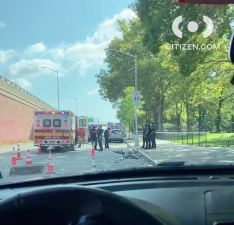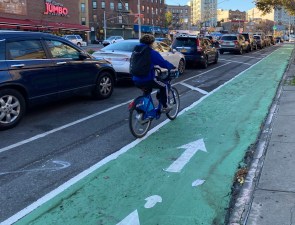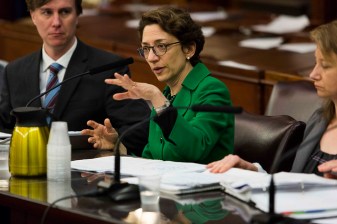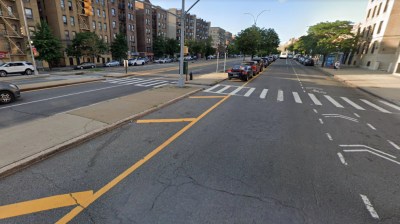City Throws More Cops at Rising Bronx Cyclist Deaths, Injuries
A protected bike-lane network is not in the offing for the beleaguered borough, the DOT says.
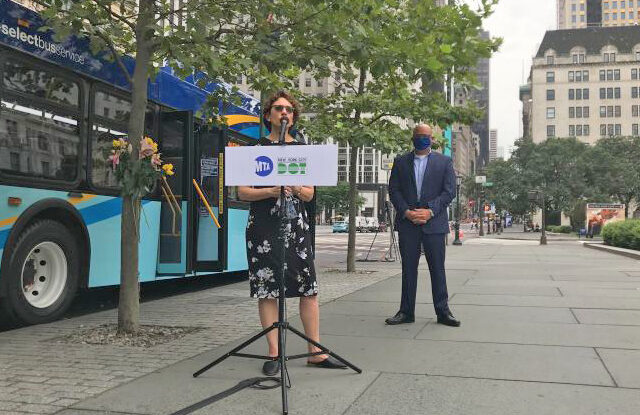
After four cyclist fatalities in the Bronx in just three months — and months of steadily rising bike injuries — the Department of Transportation is refusing to commit to providing the beleaguered borough with anything like a robust, protected bike-lane network.
Instead, DOT Commissioner Polly Trottenberg is doubling down on throwing cops at the problem, even though a four-week enforcement blitz earlier this summer did nothing to bring down the soaring number of bike injuries and crashes, according to NYPD Chief of Transportation Nilda Hofmann.
But without a protected bike-lane network, cyclists will continue to die or get hurt — and throwing cops at the problem won’t help anyone, advocates say.
“What cyclists from all over the city, but especially in the Bronx, need from this administration is more protected bike-lane infrastructure. The Bronx needs redesigned streets that are self-enforcing, not streets that are reliant on NYPD enforcement to ensure safeness,” said Erwin Figueroa, director of organizing at Transportation Alternatives.
Citywide, injuries to cyclists are down 3.6 percent compared to the same time period last year, but they’re up about 35 percent in the Bronx, according to NYPD statistics. Bikes injuries to riders in the Bronx have risen consistently during the COVID-19 pandemic, even with less traffic, as Streetsblog has reported.
Hofmann said Tuesday during a press conference in the South Bronx that the NYPD conducted a four-week educational operation and ticket sting, starting on June 29, to crack down on speeding and reckless drivers, especially at high-crash corridors, such as the Bruckner Boulevard, where the city is lowering the speed limit from 30 miles per hour to 25 miles per hour.
Pedestrian injuries did fall 80 percent — from 16 to 3 — during the police crackdown, which ended on July 26, but bike injuries didn’t budge, Hofmann said. The operation focused on dangerous driver behaviors, such as speeding and failure to yield.
“[We] conducted a four-week high-visibility enforcement operation. This operation focused on dangerous driver behaviors, such as drivers that speed and fail to yield,” said Hofmann. “We’ve seen a decrease in pedestrian injuries along targeted corridors, like Bruckner. Bike injuries remain the same.”
The Bronx has seen a run of cycling deaths and injuries.
In June, three cyclists were killed just weeks apart. On June 5, 24-year-old Morales was struck by the driver of a 2013 Lexus on Willis Avenue and E. 138th Street. He died from his injuries on June 11. That same day, Jose Luis Estudillo Garcia, 38, was fatally struck by the driver of a box truck who had been attempting to “navigate around” a double-parked vehicle on Park Avenue near E. 138th Street, Streetsblog; on June 20, Edward Marrow, 43, was struck while riding an e-bike on the Pelham Bay Bridge inside Pelham Bay Park. Just last week, a fourth cyclist who was struck near East 175th Street on Aug. 5, died from his injuries, making him the 10th cyclist killed in the city this year.
But DOT’s only plans for the Bronx right now are to partner with the NYPD. No new bike lanes are on the table; the borough was passed over for the handful of temporary protected bike lanes Mayor de Blasio announced over the last few months in order to help New Yorkers get socially distant recreation during the pandemic, and in response to surge in biking.
“This year is proving to be a very challenging one to figure out,” Trottenberg acknowledged. “We are working with PD up here on continuing speed-camera installation, doing targeted enforcement, doing speed limiting today.”
Trottenberg and DOT’s Bronx Commissioner Nivardo Lopez said the agency had to hit pause on many of its projects because of the pandemic, but is now “ratcheting up” work, including on Grand Concourse, Southern Boulevard, and Willis Avenue, which all include portions of a protected bike lane, and will conduct more community outreach soon for future projects.
“Looking at other opportunities throughout the borough, [we are] hoping to start the process to begin outreach to communities this year,” Lopez said.
But the only way to prevent more people from getting hurt or killed while biking in the Bronx is to install safe bike infrastructure as fast as possible, said Figueroa.
“The slow pace of implementation of protected bike lanes in the Bronx is being felt now more than ever. As other boroughs received announcements of pop-up protected bike lanes, not a single corridor was selected in the Bronx for this street treatment. It is time to end the inequitable implementation of protected bike lane infrastructure in the Bronx,” he said.

Hofmann said her officers issued 2,000 moving violations and 7,500 parking summonses during the four-week enforcement action.
Trottenberg consistently defends the NYPD as a valued “partner,” but advocates put little stock in NYPD Vision Zero enforcement, noting the countless instances in which officers have put cyclists in danger by parking their squad and private cars in bike lanes, and targeting cyclists of color, many of whom are low-income delivery workers, for ticketing harassment. Streetsblog recently reported that 86.4 percent of the tickets police issued for biking on the sidewalk in 2018 and 2019 went to Black and Hispanic New Yorkers.
